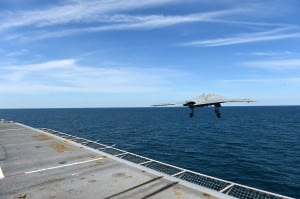
The Navy made aviation history on Tuesday when the service conducted the first ever aircraft carrier-based catapult launch of an unmanned aerial vehicle. The X-47B aircraft lifted off the deck of the USS George H.W. Bush (CVN-77) and flew for 65 minutes before arriving on land at Naval Air Station Patuxent River, Md. The launch marked a key milestone for a program the Navy hopes will evolve into a cornerstone of future operations. The Navy's X-47B lifts off the USS…













